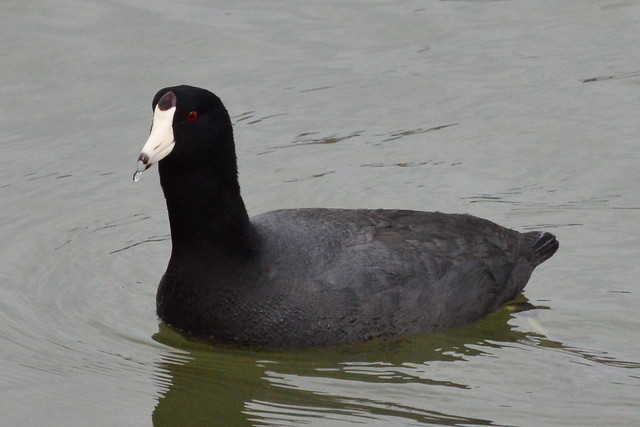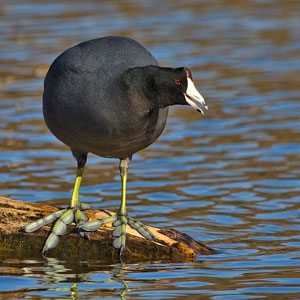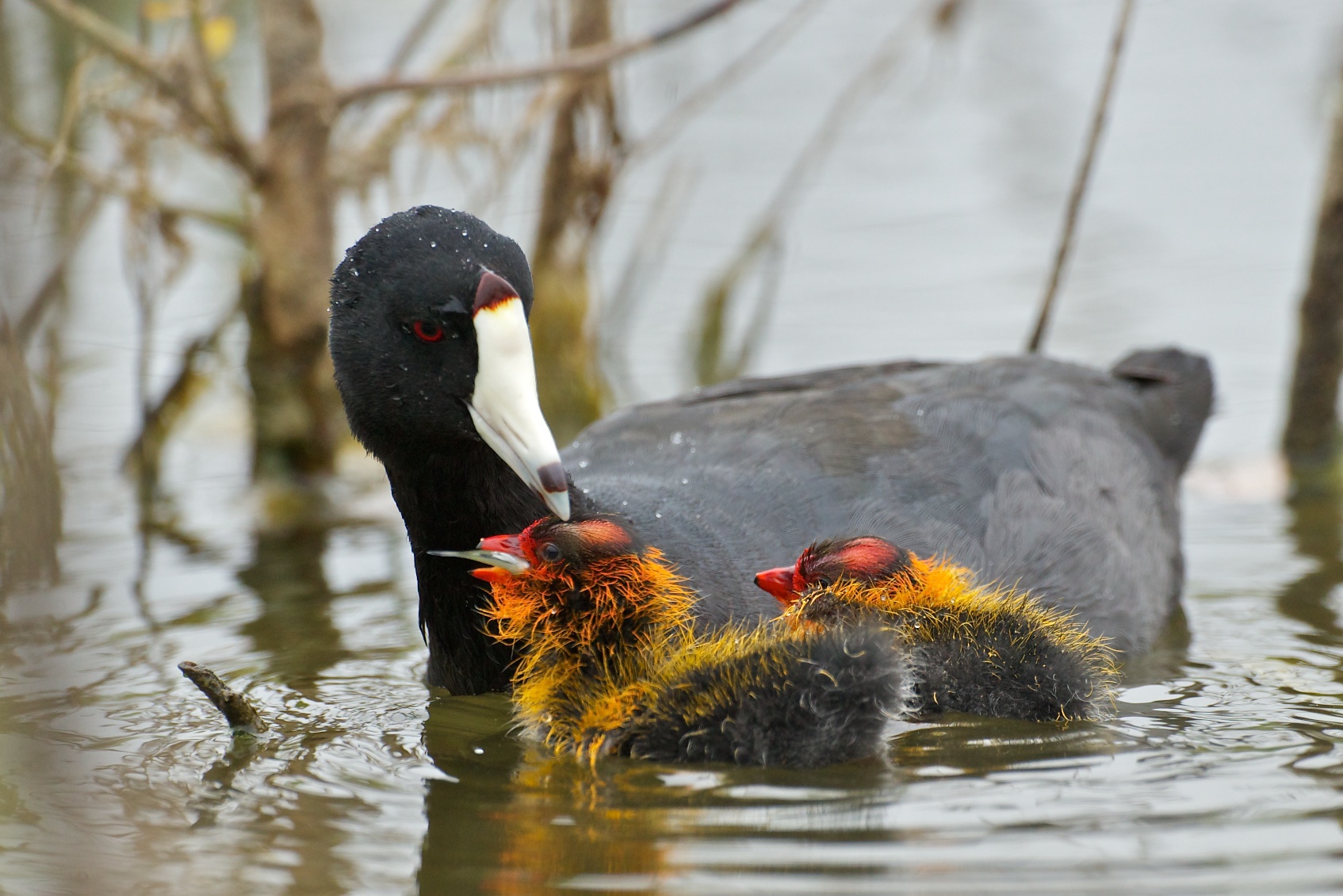
These small aquatic birds might seem like a variety of duck, but they are actually American coots. Unlike ducks, coots lack webbed feet and instead have scaly legs and toes so they can walk on land. They are migratory birds that live in the Pacific and southwestern United States year-round and occupy northeastern regions during the summer breeding season. Coots generally travel in large flocks on the water, and dive under the surface for food. They eat mainly fish, aquatic insects, and mollusks, but can also eat algae.
A coot's mating season is typically in May and June. During these months they are found in Canada and the middle of the United States. They migrate to the southern United States for the winter. Coots build their nests in reeds, and will often build several before one is selected. Once a nest is selected, a female will lay one egg a day until the clutch reaches 6 to 9 eggs. However, it is not always the female who built the nest that lays the egg. Other coots without nests lay their eggs in a nest while its owner is out foraging. In a 4-year study, researchers found that 13% of all eggs were laid by females in nests that were not their own.
However, very few 'impostor' chicks survive. This is so because the female, with an instinctive impulse to spread her genetic material, rejects the chicks that are not hers. How does she know which chick is which?
She uses the first chick to hatch as a reference, since any eggs laid by a different female will have been laid later and hatch later. Although it is not fully known how they detect which chick is which, some scientists believe they compare other chicks' size with the size of the first chick. Any chicks disproportionately large or small will be abandoned, since size is genetically inherited.
Coots are one of the only known birds to recognize brood parasitism in their chicks. Cuckoos dwell on the fact that other birds will not recognize them in their broods. However, coots are able to distinguish which chick is theirs and ensure that the only chicks they raise contain the parent's genes.


No comments:
Post a Comment